Potrebujeme váš súhlas na využitie jednotlivých dát, aby sa vám okrem iného mohli ukazovať informácie týkajúce sa vašich záujmov. Súhlas udelíte kliknutím na tlačidlo „OK“.
ASTM D7394-13
Standard Practice for Rheological Characterization of Architectural Coatings using Three Rotational Bench Viscometers
Automaticky preložený názov:
Štandardné praktiky pre reologické Charakteristika architektúry povlakov pomocou troch rotačných Bench viscometers
NORMA vydaná dňa 1.7.2013
Informácie o norme:
Označenie normy: ASTM D7394-13
Poznámka: NEPLATNÁ
Dátum vydania normy: 1.7.2013
Kód tovaru: NS-38352
Počet strán: 5
Približná hmotnosť: 15 g (0.03 libier)
Krajina: Americká technická norma
Kategória: Technické normy ASTM
Kategórie - podobné normy:
Anotácia textu normy ASTM D7394-13 :
Keywords:
Brookfield-type viscometer, cone/plate-type viscometer, high-shear viscosity, low-shear viscosity, mid-shear viscosity, paints, rheology, Stormer viscometer, viscosity, ICS Number Code 17.060 (Measurement of volume, mass, density, viscosity)
Doplňujúce informácie
| Significance and Use | ||||||||||||||||||||||||
|
5.1 A significant feature of this practice is the ability to survey coating rheology over a broad range of shear rates with the same bench viscometers and test protocol that paint formulators and paint QC analysts routinely use. By using this procedure, measurement of the shear rheology of a coating is possible without using an expensive laboratory rheometer, and performance predictions can be made based on those measurements. 5.2 Low-Shear Viscosity (LSV)—The determination of low-shear viscosity in this practice can be used to predict the relative “in-can” performance of coatings for their ability to suspend pigment or prevent syneresis, or both. The LSV can also predict relative performance for leveling and sag resistance after application by roll, brush or spray. 5.3 Mid-Shear Viscosity (MSV)—The determination of MSV (coating consistency) in this practice is often the first viscosity obtained. This viscosity reflects the coatings resistance to flow on mixing, pouring, pumping, or hand stirring. Architectural coatings nearly always have a target specification for mid-shear viscosity, which is usually obtained by adjusting the level of thickener in the coating. Consequently, mid-shear viscosity is ideally a constant for a given series of coatings being tested to provide meaningful comparisons of low-shear and high-shear viscosity. With viscosities at the same KU value, MSV can also be used to obtain the relative Mid-Shear Thickener Efficiency (MSTE) of different thickeners in the same coating expressed as lb thickener/100 gal wet coating or g thickener/L wet coating. 5.4 High-Shear Viscosity (HSV)—High-shear viscosity in this practice is a measure of the coatings resistance to flow on application by brush or roller, which is often referred to as brush-drag or rolling resistance respectively. This viscosity relates to the coatings ability to provide one-coat hiding, its ease of application (brushing or rolling resistance), and its spread rate. Fig. 2 shows high-shear viscosity relationship predictions for relative coating performance. |
||||||||||||||||||||||||
| 1. Scope | ||||||||||||||||||||||||
|
1.1 This practice covers a popular industry protocol for the rheological characterization of waterborne architectural coatings using three commonly used rotational bench viscometers. Each viscometer operates in a different shear rate regime for determination of coating viscosity at low shear rate, mid shear rate, and at high shear rate respectively as defined herein. General guidelines are provided for predicting some coating performance properties from the viscosity measurements made. With appropriate correlations and subsequent modification of the performance guidelines, this practice has potential for characterization of other types of aqueous and non-aqueous coatings. 1.2 The values in common viscosity units (Krebs Units, KU and Poise, P) are to be regarded as standard. 1.3 This standard does not purport to address all of the safety concerns, if any, associated with its use. It is the responsibility of the user of this standard to establish appropriate safety and health practices and determine the applicability of regulatory limitations prior to use. |
||||||||||||||||||||||||
| 2. Referenced Documents | ||||||||||||||||||||||||
|
Podobné normy:
Historická
1.12.2011
Historická
1.5.2013
Historická
1.5.2014
Historická
1.11.2013
Historická
1.1.2013
Historická
1.10.2009
Odporúčame:
Aktualizácia technických noriem
Chcete mať istotu, že používate len platné technické normy?
Ponúkame Vám riešenie, ktoré Vám zaistí mesačný prehľad o aktuálnosti noriem, ktoré používate.
Chcete vedieť viac informácií ? Pozrite sa na túto stránku.


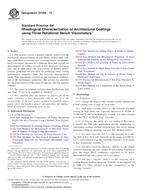
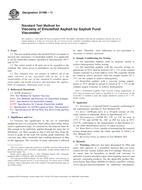 ASTM D7496-11
ASTM D7496-11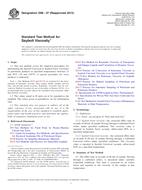 ASTM D88-07(2013)..
ASTM D88-07(2013)..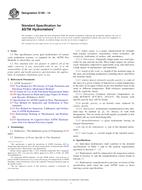 ASTM E100-14
ASTM E100-14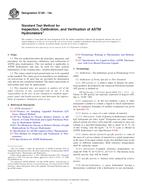 ASTM E126-13a
ASTM E126-13a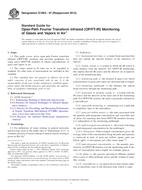 ASTM E1865-97(2013)..
ASTM E1865-97(2013)..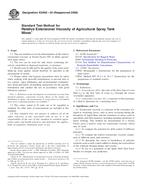 ASTM E2408-04(2009)..
ASTM E2408-04(2009)..
 Cookies
Cookies
